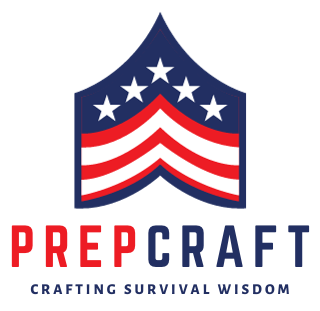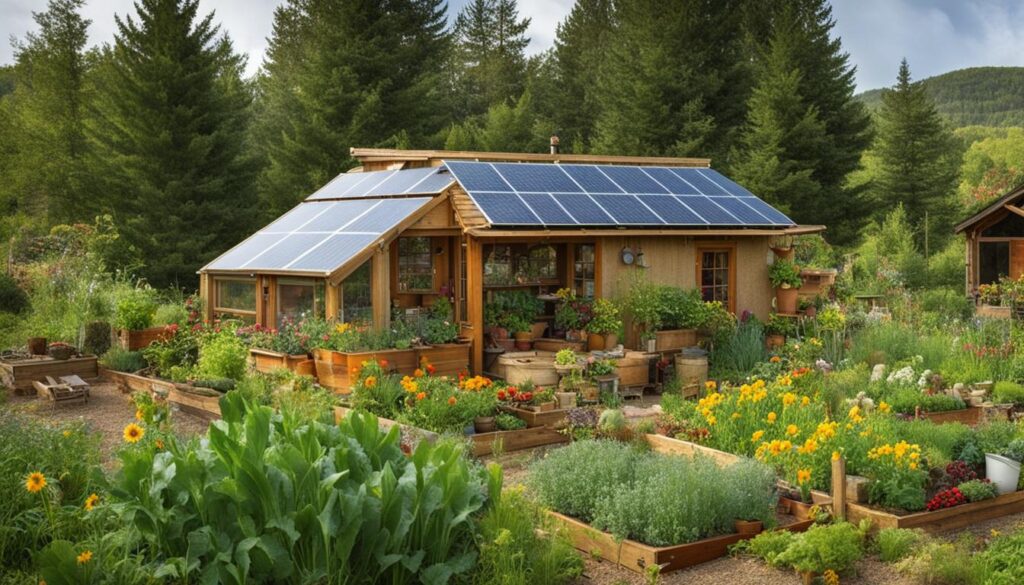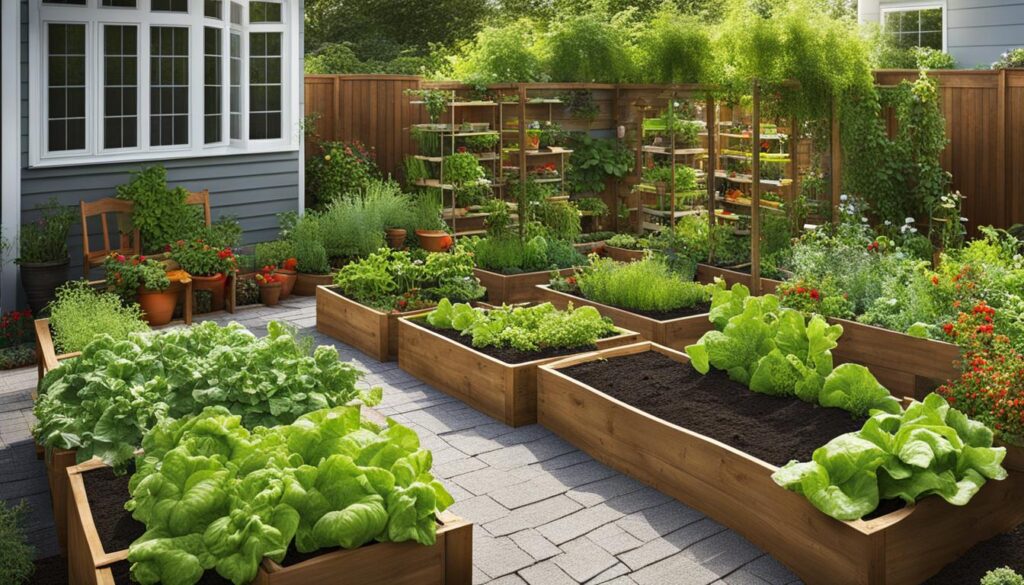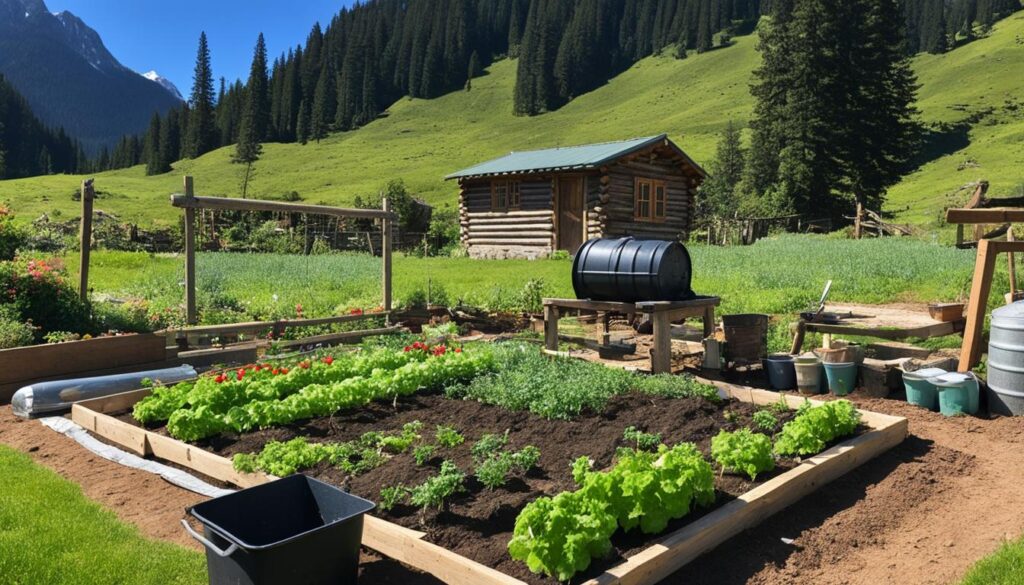
As a survivalist, I know the importance of being prepared for any situation. Whether it’s a natural disaster or a man-made crisis, homesteading on a budget is essential for ensuring the safety and well-being of myself and my loved ones. By adopting frugal strategies and making smart choices, I’ve been able to create a cost-effective lifestyle that allows me to thrive in any scenario.
In this article, I will share my best tips for homesteading on a budget, providing you with practical strategies that will help you navigate through uncertain times. From creating a budget and sticking to it, to making a checklist for your survival needs, I will guide you through the process of building a self-reliant lifestyle without breaking the bank.
Key Takeaways:
- Create a budget and stick to it to ensure you’re not overspending.
- Make a checklist of your survival needs and prioritize the most essential items.
- Explore alternative sources for food and supplies to save money.
- Stretch your food budget by meal planning and buying in bulk.
- Be selective with your purchases and prioritize durable and functional products.
Importance of Preparing for Long-Term Survival
Preparing for long-term survival is critical for frugal survivalists like me. In a crisis situation, short-term preparations might not be enough to sustain us. That’s why it’s crucial to invest in long-term survival supplies, ensuring we can thrive even when facing an extended period without electricity or access to stores.
As the saying goes, “Hope for the best, but prepare for the worst.”
During a disaster, such as a natural calamity or social unrest, the infrastructure we rely on for our daily needs may be compromised. This can leave us without sustainable sources of food and water for an extended duration. To safeguard against such uncertainties, it’s essential to stock up on long-term survival supplies.

When it comes to preparing for long-term survival, there are a few key items that I consider a priority:
- Non-perishable food items: Stocking up on canned goods, dry goods, and other long-lasting food products is essential. These items can provide sustenance when fresh produce is scarce or unavailable. Aim for a variety of nutrient-dense foods to maintain a balanced diet.
- Purified water: Clean drinking water is crucial for our survival. Consider investing in a water filtration system or storing water in containers that are safe for long-term storage.
- First aid supplies: In a crisis, access to medical care may be limited. Having a well-equipped first aid kit and basic medical supplies can help address minor injuries and illnesses.
- Emergency lighting and communication tools: Power outages are common during disasters. Having reliable lighting sources and communication devices, such as flashlights, lanterns, and a battery-powered radio, can provide comfort and valuable information.
- Survival gear and tools: Basic tools like a multi-tool, firestarter, and portable stove can be invaluable during a crisis. Additionally, durable clothing, blankets, and sleeping bags can help protect us from the elements.
Stocking Up on Essentials on a Budget
Now, you might think that preparing for long-term survival comes with a hefty price tag. However, being a frugal survivalist means finding cost-effective ways to stock up on essentials without breaking the bank.
One budget-friendly strategy is to gradually build your emergency supplies over time. Start by focusing on essential items like food, water, and first aid supplies. Consider setting aside a small portion of your monthly budget to invest in these items.
“Being a frugal survivalist means finding cost-effective ways to stock up on essentials without breaking the bank.”
Look for sales, discounts, and bulk buying options to maximize your savings. Online marketplaces and local stores often offer competitive prices on survival supplies, especially when purchasing in larger quantities.
Don’t forget to consider alternative sources as well. For example, instead of buying all your food supplies, you can supplement your stockpile by growing your own fruits and vegetables through home gardening. This not only saves money but also ensures a fresh and sustainable food source.
Your long-term survival supplies are investments in your future well-being. By planning ahead, prioritizing your budget, and seeking out cost-effective solutions, you can prepare for long-term survival without compromising your financial stability.
Creating a Prepping Budget
As a frugal survivalist, setting a prepping budget is crucial to ensure that you allocate your resources efficiently and effectively. By dedicating a specific amount of money to your prepping supplies, you can avoid overspending and going into unnecessary debt.
Here are some practical tips on how to create a prepping budget:
- Assess your current expenses: Start by reviewing your current expenses and identifying areas where you can cut back. By eliminating unnecessary expenses, you can free up more money for your prepping budget.
- Create a realistic budget: Once you have a clear understanding of your financial situation, create a realistic budget that includes a section specifically for prepping supplies. This will help you allocate funds for these essential items without compromising your overall financial stability.
- Utilize coupons and discounts: Take advantage of coupons, discounts, and sales to save money on your prepping supplies. Keep an eye out for deals and subscribe to relevant newsletters to stay informed about any cost-saving opportunities.
- Explore alternative sources: Look beyond traditional retailers when sourcing your prepping supplies. Consider local farmers’ markets, bulk buying options, and even bartering with other like-minded individuals to obtain the necessary items at a lower cost.
Remember, when creating a prepping budget, it’s important to prioritize the most essential items for your survival needs. Focus on the key supplies that will contribute significantly to your self-reliance and resilience in any crisis situation.
Prepping Budget Example
Here’s an example of a prepping budget to help you get started:
| Category | Allocation |
|---|---|
| Food | $200 per month |
| Water | $50 per month |
| Medical supplies | $100 per month |
| Communication devices | $50 per month |
| Emergency tools | $50 per month |
| Other essentials | $100 per month |
| Total | $550 per month |
In this example, the prepping budget is divided into different categories, each with a monthly allocation. Adjust these allocations according to your specific needs and financial situation.
Creating a prepping budget not only helps you manage your financial resources effectively but also ensures that you have the necessary supplies to thrive in any survival scenario.
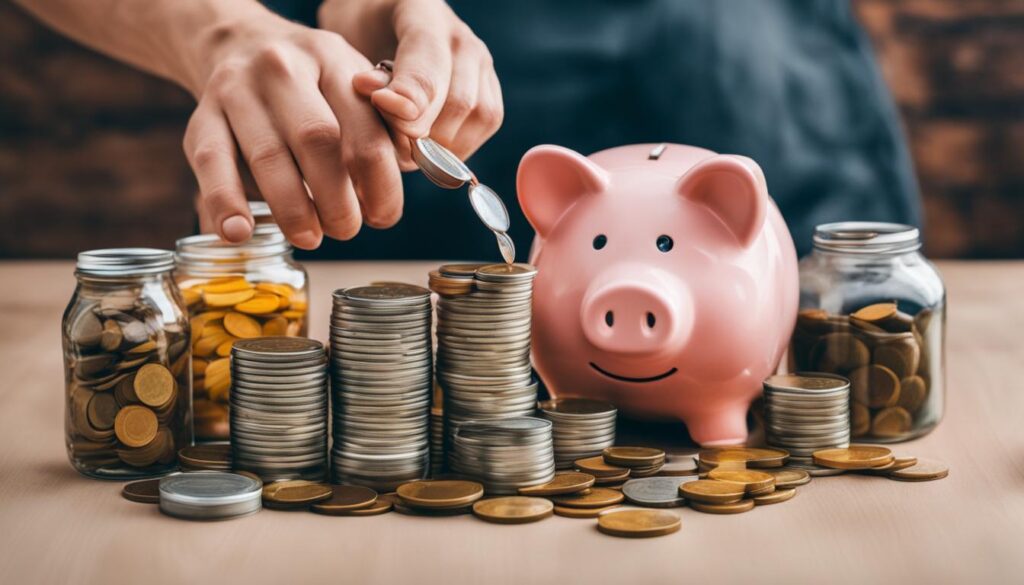
Stretching Your Food Budget
When it comes to homesteading on a budget, stretching your food budget is of utmost importance. By adopting practical strategies, you can make the most of your food spending and save money on groceries. Here are ten tips to help you stretch your food budget and maximize the value of your purchases:
- Meal planning: Plan your meals in advance to avoid impulse purchases and reduce food waste.
- Buy in bulk: Purchase staple foods in bulk to take advantage of discounts and lower unit prices.
- Explore farmer’s markets: Visit local farmer’s markets for fresh, affordable produce directly from local growers.
- Grow your own food: Start a home garden to produce your own fruits, vegetables, and herbs, reducing your grocery expenses.
- Cook from scratch: Prepare meals from scratch using basic ingredients instead of relying on pre-packaged and processed foods.
- Use leftovers: Get creative with leftovers by turning them into new dishes or incorporating them into future meals.
- Compare prices: Compare prices at different grocery stores to identify the best deals and discounts.
- Utilize coupons and rebates: Take advantage of coupons, rebates, and loyalty programs to save money on your grocery purchases.
- Purchase seasonal produce: Opt for seasonal produce as it tends to be more affordable and fresher.
- Minimize food waste: Avoid food waste by storing food properly, using leftovers, and repurposing ingredients.
By incorporating these tips into your homesteading journey, you can stretch your food budget and save money on groceries, allowing you to allocate your resources more efficiently for other prepping needs.
| Tip | Description |
|---|---|
| Meal Planning | Plan your meals in advance to avoid impulse purchases and reduce food waste. |
| Buy in Bulk | Purchase staple foods in bulk to take advantage of discounts and lower unit prices. |
| Explore Farmer’s Markets | Visit local farmer’s markets for fresh, affordable produce directly from local growers. |
| Grow Your Own Food | Start a home garden to produce your own fruits, vegetables, and herbs, reducing your grocery expenses. |
| Cook from Scratch | Prepare meals from scratch using basic ingredients instead of relying on pre-packaged and processed foods. |
| Use Leftovers | Get creative with leftovers by turning them into new dishes or incorporating them into future meals. |
| Compare Prices | Compare prices at different grocery stores to identify the best deals and discounts. |
| Utilize Coupons and Rebates | Take advantage of coupons, rebates, and loyalty programs to save money on your grocery purchases. |
| Purchase Seasonal Produce | Opt for seasonal produce as it tends to be more affordable and fresher. |
| Minimize Food Waste | Avoid food waste by storing food properly, using leftovers, and repurposing ingredients. |
By following these ten tips, you can effectively stretch your food budget and make the most of your homesteading experience while saving money.
Testimonial: Stretching My Food Budget
“As a frugal survivalist, stretching my food budget has become second nature. By implementing these tips, I have been able to save a significant amount of money while still providing nutritious meals for my family. Planning our meals, growing our own food, and shopping at farmer’s markets have not only helped us save money but have also connected us with our local community. It’s a win-win situation!”
Being Selective with Your Purchases
As a frugal survivalist, it is crucial to develop smart buying practices and carefully select essential prepping supplies. By prioritizing durability and functionality, you can ensure that the items you invest in will serve you well during challenging times.
“The key to successful prepping is understanding the difference between essential items and those that can be acquired at a lower cost without compromising your preparedness.”
One area where it is wise to allocate a larger portion of your budget is communication devices. Having reliable means of communication during a crisis can be a lifeline. Splurge on a reputable walkie-talkie or two-way radio system that will allow you to stay connected with your loved ones or fellow preppers.
Research and Advice from Experienced Preppers
When it comes to prepping supplies, take the time to research and seek advice from experienced preppers. They have valuable insights and can help you make informed decisions about the items you need.
- Green Beret: “Invest in multi-purpose tools like a Swiss Army knife or a Leatherman. They are versatile and can serve you in various survival scenarios.”
- Experienced Prepper: “Don’t overlook the importance of a reliable water filter. Look for one that is easy to use and has excellent filtration capabilities.”
- Outdoor Enthusiast: “Consider investing in a high-quality backpack that is comfortable and can withstand rugged conditions. It will be your companion during long journeys or in emergency evacuation situations.”
By learning from experienced preppers and focusing on functional, durable, and essential items, you can optimize your prepping strategy without unnecessary expenses.
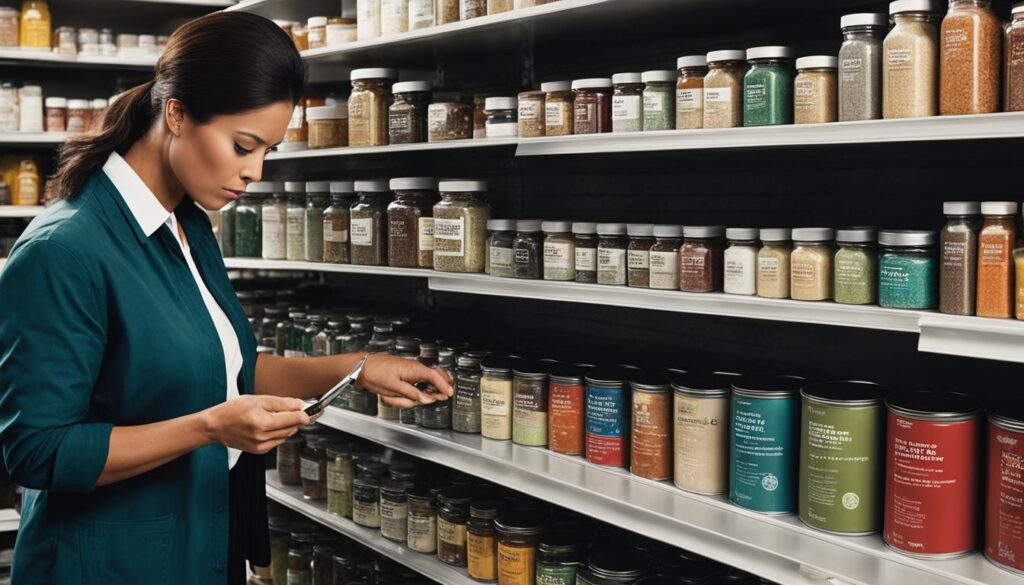
| Smart Buying Practices | Benefits |
|---|---|
| Prioritize durability and functionality | Ensures that your prepping supplies will last and perform effectively when needed. |
| Research and seek advice from experienced preppers | Gives you valuable insights and recommendations from those with practical knowledge. |
| Invest in reliable communication devices | Allows you to stay connected with your loved ones or fellow preppers during a crisis. |
| Consider multi-purpose tools and essential items | Optimizes your prepping strategy by focusing on versatile, practical supplies. |
Conclusion
In conclusion, homesteading on a budget is not only possible but also essential for frugal survivalists. By implementing the tips and strategies provided in this article, you can create a cost-effective lifestyle that prepares you for any crisis or disaster. Remember to set a budget, prioritize your needs, and be selective with your purchases.
With careful planning and resourcefulness, you can achieve self-reliance and resilience in any situation. Homesteading on a budget is a skill that will serve you well in the present and in the future.
FAQ
What is homesteading on a budget?
Homesteading on a budget refers to adopting a self-sufficient lifestyle while being mindful of expenses and finding cost-effective ways to meet survival needs.
Why is homesteading on a budget important for frugal survivalists?
Homesteading on a budget is important for frugal survivalists because it allows them to be prepared for any crisis or disaster without overspending and going into debt.
How can I prepare for long-term survival on a budget?
To prepare for long-term survival on a budget, it’s essential to invest in long-term survival supplies such as food and water, and stock up on these essentials without breaking the bank. This section provides tips and strategies for cost-effective preparations.
How can I create a prepping budget?
Creating a prepping budget involves allocating a specific amount of money for prepping supplies, cutting unnecessary expenses, using coupons, and finding alternative sources for food and supplies. This section provides practical tips for creating a prepping budget on a budget.
What are some tips for stretching my food budget?
Stretching your food budget can be achieved through meal planning, buying in bulk, and exploring alternative sources of food such as farmer’s markets and home gardening. This section provides ten tips for stretching your food budget effectively.
How can I be selective with my purchases as a frugal survivalist?
Being selective with your purchases involves differentiating between essential items worth investing in and non-essential items that can be purchased at a lower cost. This section provides guidance on smart buying practices and prioritizing durable and functional products.
